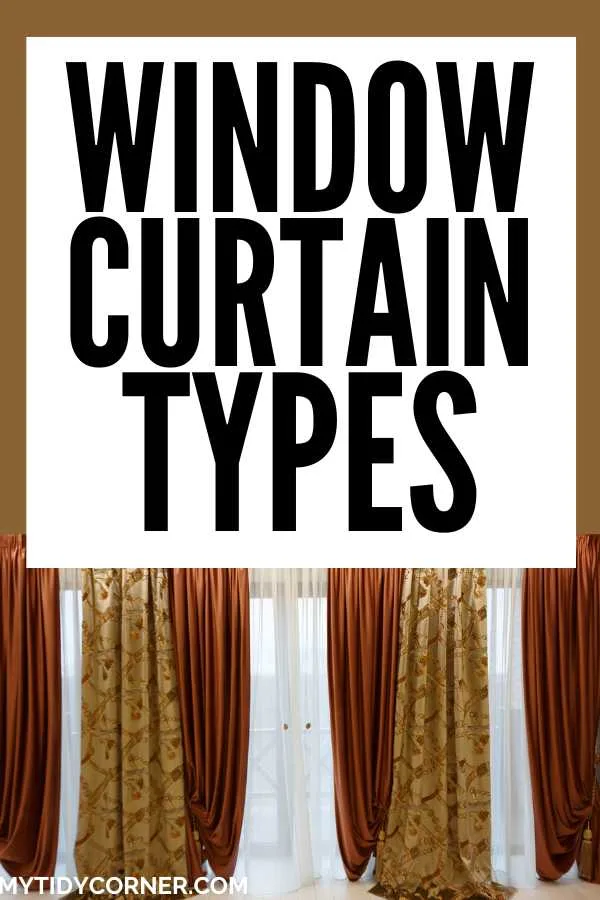Different Window Curtain Types – Unveiling the Magic of Curtains
Find out the various ways of exploring the different types of curtains.
If you spend time scrolling through gorgeous homes on Instagram, you’ll realize that curtains are an essential finishing touch to a room.
But I’ve realized that the variety of curtain types is overwhelming. Never fear. I’ve taken a deep dive into the world of window treatments to guide you through the different types of curtains.
Different types of curtains are classified by length, from valances, swags, and café curtains to full-length drapes puddling on the floor. Headers include gathering, pleating, rod pockets, grommets, and tab tops. Decide if you need single or double panels and if they must block out or filter light.
As the legendary textile designer and artist William Morris once commented, “Have nothing in your houses that you do not know to be beautiful or believe to be useful.”
Morris wasn’t speaking specifically about curtains, but they are the ultimate home decor item, combining function and beauty, which is why there are so many ways of exploring the different types of curtains.

Related Articles:
- Drapes Vs Curtains – What is the Difference?
- Lined or Unlined Curtains – Decoding the Curtain Dilemma for a Stylish and Functional Home
- 11 Great Alternatives to Curtains for Windows
- Standard Curtain Sizes – A Complete Guide
Different Types of Curtains by Length
One way to classify curtains is by their length or distance from the floor. Deciding on curtain length is a great starting point when selecting curtains.
#1. Valances
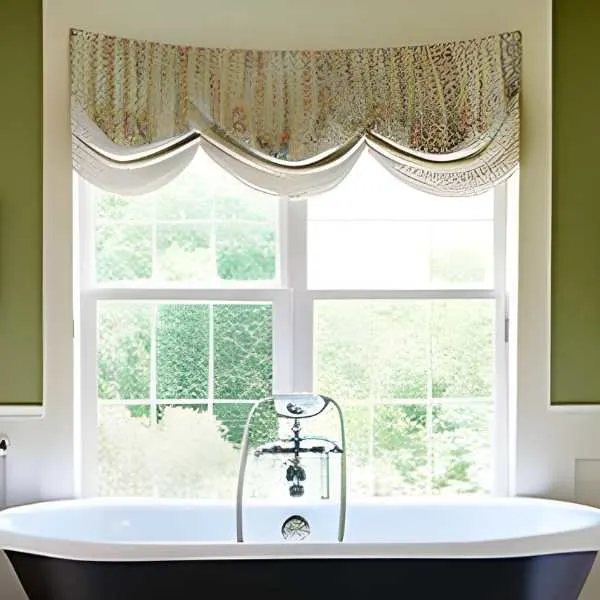
A valance is a fabric window treatment that hangs at the top of the window, often clipped to the curtain rod. Simple valances are like a very short curtain with softly gathered folds. Pleated valances are a more formal window treatment, hanging quite stiffly because of their box pleats.
Both styles of valances are often combined with curtains and are placed to hide the hardware of curtain rings, clips, hooks, and rods.
However, if your windows don’t need covering for privacy, light blocking, or soundproofing, a valance is a charming way of softening a window and adding color and interest to a room.
Choose a simple valance for casual interiors, like a farmhouse kitchen, or have pleated valances made if your interiors are Colonial or traditional.
#2. Swags
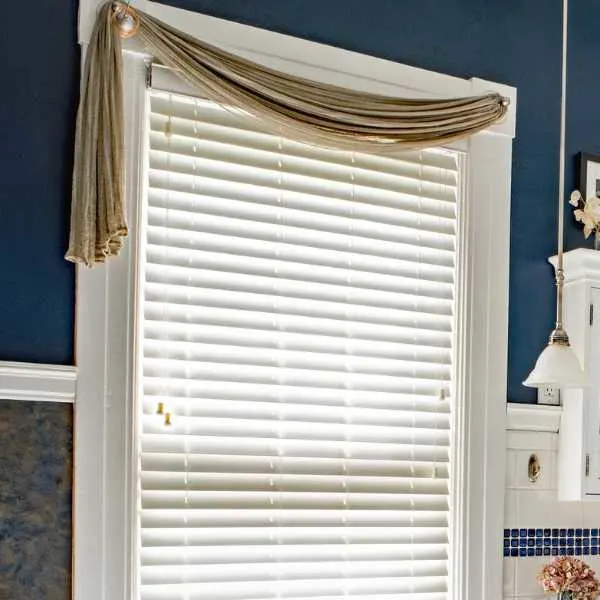
Swags or window scarves are placed over the curtain rod like valances but consist of a piece of fabric simply draped or wound over the tie-back.
You can hang swags in different ways, but they are usually draped with a billowy dip over the window and the ends hanging on either side of the window frame.
You can combine swags with curtains for a decorative, layered look or with blinds if you need privacy. However, on their own, they add a glamorous, elegant touch. Consider swags if your interiors are English or French country-style.
#3. Austrian Shades
FADFAY Balloon Curtain Adjustable Tie-Up
Austrian or balloon shades are a magnificent, formal type of window treatment. They consist of curtain panels that gather into charming scallops, poufs, or “balloons” when raised. They are usually made of sheer, net, or satin fabric, giving an opulent look.
Balloon shades are associated with glamorous interiors, including those with a touch of Rococo French style. Layer them with curtains or drapes if you need full window coverage.
#4. Sill-Length Curtains
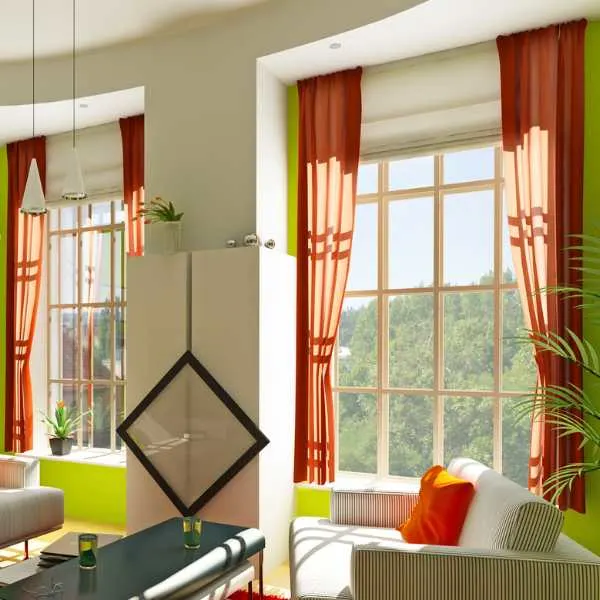
These are short curtains, only reaching the window sill. Sill-length curtains are ideal in kitchens and bathrooms, with windows above countertops or sinks, or in a cluttered, busy room.
#5. Cafe Curtains
jinchan Kitchen Strped Linen Cafe Curtains
Another style of curtain popular in kitchens and bathrooms is the cafe curtain. These balance privacy with light, covering only the bottom half of the window and allowing sunshine to stream in from the top.
Typically European, café curtains add a touch of charm to a kitchen. Because they’re so small, you can splash out on gorgeous fabric.
#6. Apron Length Curtains
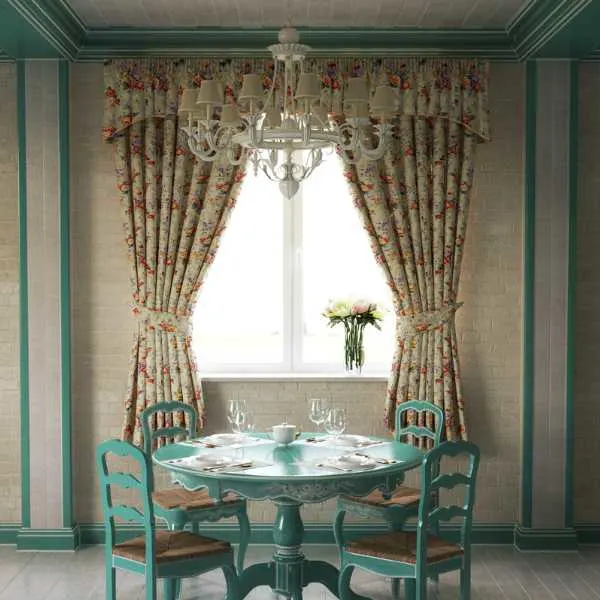
Apron length curtains hang between the window sill and the floor. A rather old-fashioned length, apron-style curtains are used only when something is blocking floor-length curtains, such as a piece of furniture or a radiator.
They can make small windows look longer but look awkward to modern eyes.
#7. Full Length Curtains
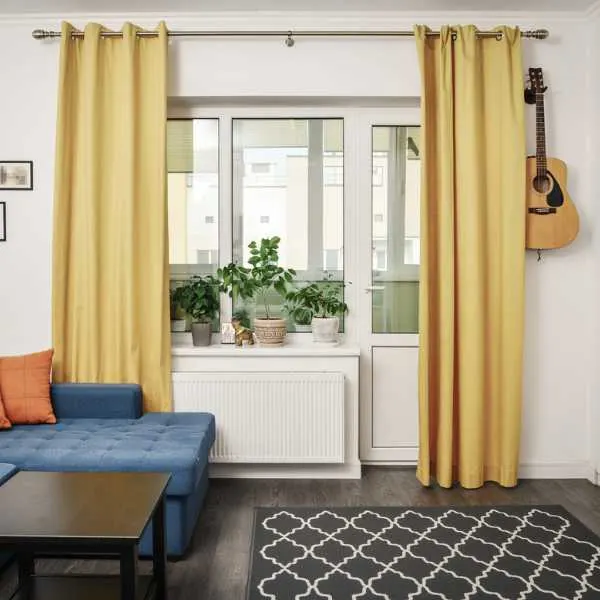
The standard curtain length, also called floor length, typically reaches about a half inch above the floor.
In other words, the curtains “float” or, if a little longer, “kiss” the floor. You can buy ready-made full-length curtains in standard measurements.
They’re perfect for floor-to-ceiling windows or glass patio doors. If you have small windows, install the curtain rod higher up to create the illusion of a high ceiling.
#8. Puddle Length Curtains
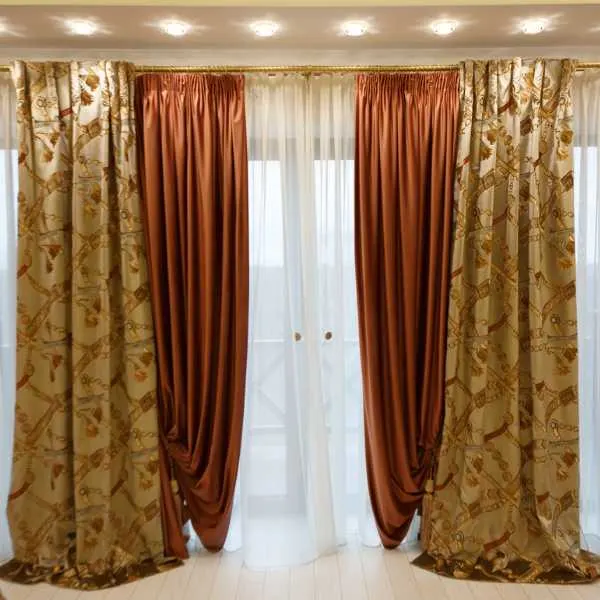
For a more dramatic, romantic touch, hang your curtains extra long so that they “puddle” on the floor. This elegant curtain style works in formal living rooms and bedrooms but is impractical if you have small children and pets.
They require continual maintenance as the curtain hems pick up dust and must be repositioned regularly.
Window Curtain Types by Panels
Another way of classifying curtains is by how many panels or drops you hang. A panel is a continuous length of fabric, making up a single curtain.
#9. Single Panel Curtains
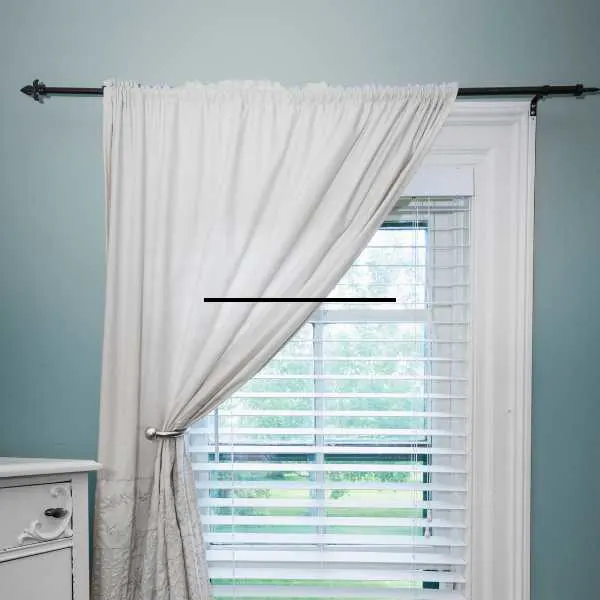
A single-panel curtain works for small windows, which would be overwhelmed by two panels. Because it’s a single curtain, you can splurge a little on the fabric, choosing sumptuous velvet or linen.
Typically, you’d hang the curtain and tuck it behind a pull-back or fasten it with a tie-back.
#10. Double Panel Curtains
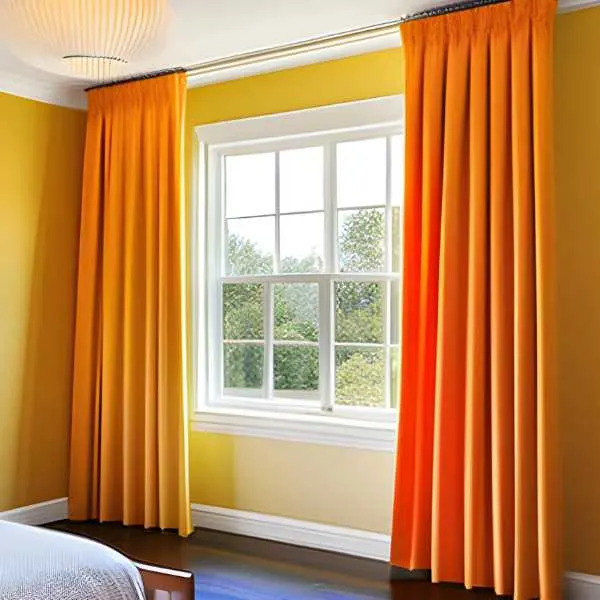
Most curtains are sold in pairs or double panels, with one panel on either side of the window or door. This classic curtaining style can be used on a single large window or two windows side by side, with a wall or a tall piece of furniture between them.
Different Types of Curtains by Headers
When you’ve decided on curtain length and how many panels you need, consider what headers the curtains should have.
Headers are the tops of curtains that attach to the drapery pole and come in various styles.
#11. Gathered Curtains
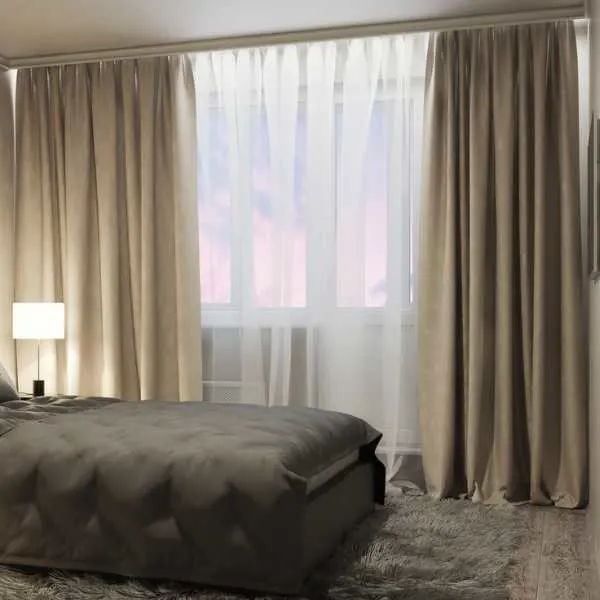
Light-weight, unlined, and short curtains often have a simple gathered top with a single tape to which you attach the curtain hooks. This creates an informal, relaxed look, which you can customize by gathering the header more or less tightly.
#12. Pencil Pleat Curtains
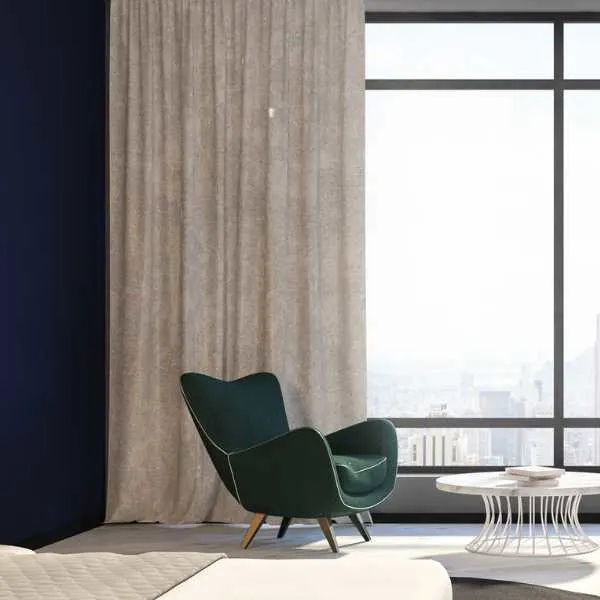
If you buy ready-made curtains, they will likely have pencil pleats or three-inch tape headers. The curtains have small creases across the top panel, backed by tape with three horizontal rows of string or cord, allowing you to choose three different hook positions.
Use pronged hooks to create the pleats. Once you have placed the hooks, you pull the ends of the string to create tighter or looser pleats. The pleats open out to create full curtain panels, elegant and timeless.
#13. Pinch Pleat Curtains
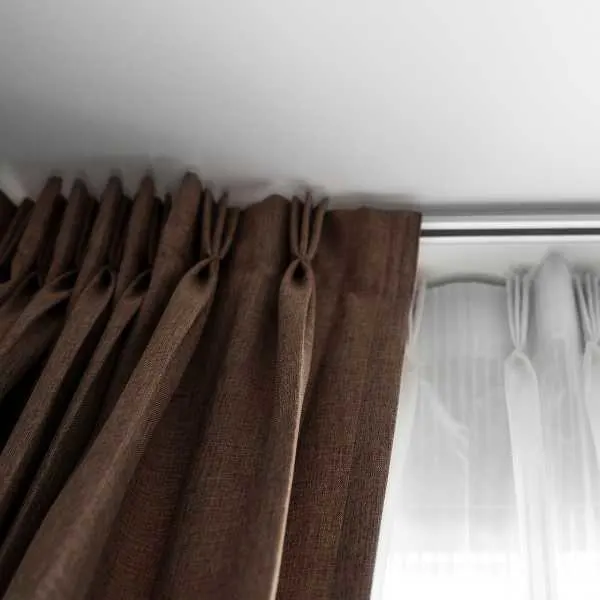
For formal drapes, usually custom-made, go for pinch pleat curtains. The pinch pleat consists of three to five tight folds of fabric, often handsewn, from which the fuller fabric gently fans out. Unlike pencil pleat curtains, the pleats are permanent.
The most popular is the three-finger pinch or French pleat, with three tailored pleats. This creates an elegant, sophisticated look. This is a designer favorite for bedrooms and living rooms.
Two-finger pleats offer a more contemporary style without sacrificing the full, soft drape. They are ideal for patterned fabrics, which can look fussy.
Installing these curtains is tricky, as you need to get the panels to lay neatly at the top against the rod but to drape down below. Attach the curtains with pin hooks or rings.
#14. Goblet Pleat Curtains
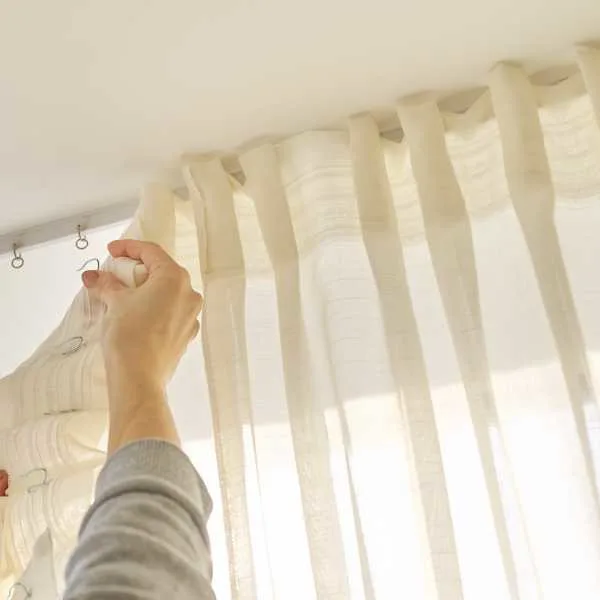
An opulent look is created by goblet pleats, which need to be handsewn and customized along with the curtain rod. The pleats are fuller than pinch pleats and are sewn further down the crease. The fabric bulges out, creating a goblet shape.
#15. Box Pleat Curtains
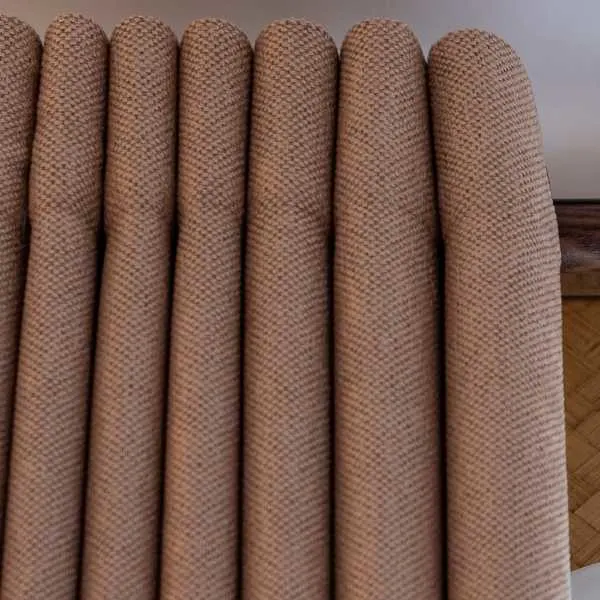
For an even more dramatic look, choose box pleats. This curtain style requires detailed measurement, sewing, and customization. The wide, angular pleats require double the fabric of other curtains but don’t look bulky as the pleats fold inwards.
The luxurious, tailored look suits formal dining rooms and living rooms. Use contemporary statement fabrics to avoid a pretentious look.
#16. Ripple Fold Curtains
Linen Duet Velvet Curtains W90” – L50-140 | Ripplefold Curtains
Ripple ffold curtains are common in contemporary homes and hotels with tailored, S-shaped folds. The corded carriers create the folds on the smooth, recessed track on which you hang the curtains.
The track makes them easy to open and close, so these headers are perfect for bedrooms or living rooms. And the elegant folds enhance the drape of a fabric, so choose gorgeous, lustrous satins and sateens.
#17. Rod Pocket Curtains
100% Blackout Shield Linen Blackout Rod Pocket Window Curtains
Rod-pocket, pole top, or casement curtains have a pocket at the top that slides over and envelops the curtain rod. These curtains are popular as they are easy to hang, the ruched fabric obscures the curtain rod, and they are well-priced.
This casual, relaxed look works well for bedrooms, and they are perfect for blackout curtains as they prevent any light from entering.
However, opening and closing the curtains can be tricky, so choose them for smaller windows. These curtains work best with tie-backs to keep them open.
#18. Grommet Curtains
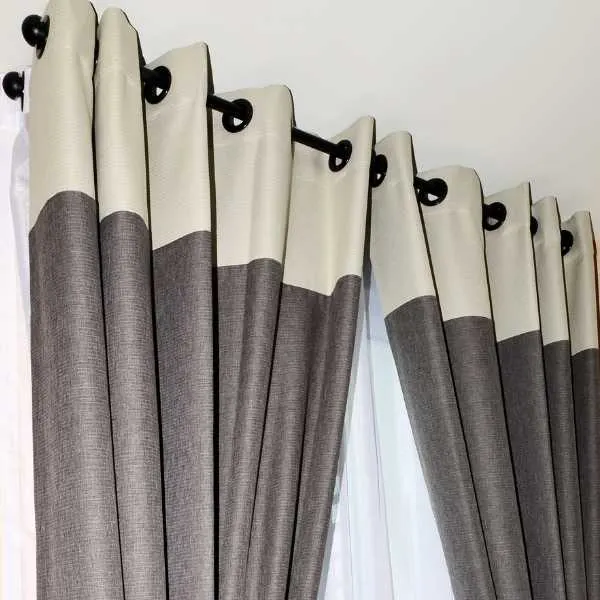
Grommet curtains have large eyelets or metal-ringed holes punched into the top, through which you slide the curtain pole. This makes them easy to install, as no rings are hooks are needed.
Grommet curtains are available off the shelf and are well-priced. They create a clean, uncluttered look for casual, minimalist, and contemporary spaces.
However, the panels are not very full, with large, even folds, so they use less fabric but don’t create a soft, billowing look. The metal rings are also noisy and add a metallic element that may not match your decor. There is also no space for a valance.
#19. Tab Top Curtains
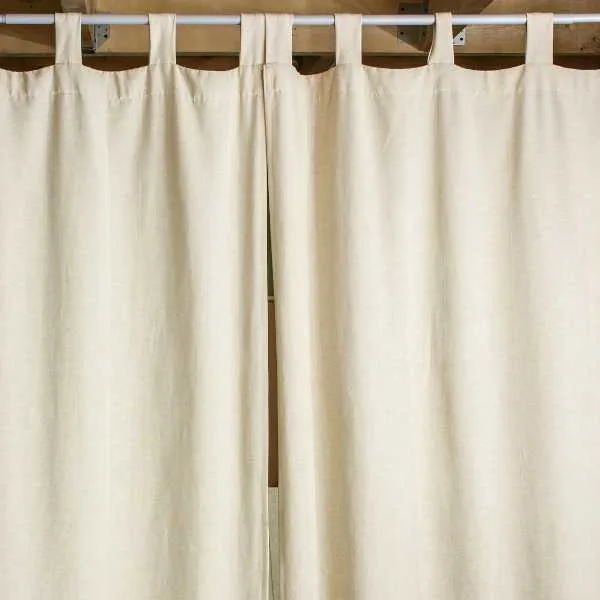
Tab top curtains are similar to eyelet and rod-pocket curtains in that they don’t require curtain hooks or rings. Instead, they are topped with fabric loops or ties that go around the curtain rod.
The curtains are usually ready-made and come in standard lengths. Because of the tabs, they are not very full, so they are best for smaller windows.
The decorative tabs create an informal, Bohemian feel, especially if embellished and knotted.
If you choose rough cotton or linen, they are perfect for a coastal aesthetic, while plaid or gingham creates a farmhouse, cottage-core look. The rod is exposed, so it’s best if it, too, is decorative.
Like rod-pocket curtains, tab tops are tricky to open and close smoothly, so they are good for less-used windows.
Different Types of Curtains by Functions
An alternative way to plan curtain purchases is to consider their function: are they necessary for privacy, for example?
#20. Blackout Curtains
These full-length curtains are made of heavy fabric and thickly woven lining to block out light in bedrooms or home cinemas. They also provide complete privacy and a measure of insulation.
Blackout curtains come in various fabrics but are usually dark-colored and solid. (You may also want to read this post to learn the difference between thermal and blackout curtains.)
#21. Sheer Curtains
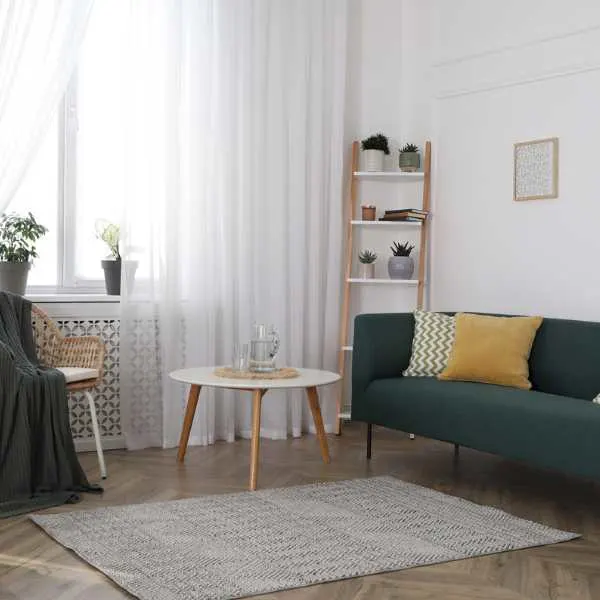
The opposite of blackout curtains, sheer curtains are almost transparent. Made of net, gauze, or other light-weight fabric, these curtains allow light to filter into the room, creating an ethereal, romantic ambience.
They don’t provide much privacy but are very charming and atmospheric.
#22. Semi Sheer Curtains
MIULEE Sage Green Linen Curtains Textured, Semi Sheer, Light Filtering
Semi sheer or light-filtering curtains are slightly heavier than sheers, allowing sunlight to enter the room, but with a measure of privacy. Soft cotton and linen curtains look beautiful if installed near the ceiling, creating the illusion of space.
Final Thoughts on the Different Curtain Types
Apart from the choice of color and fabric, curtains are classified into different types according to length, number of panels, type of header, and function. For example, choose a single-panel, gathered sill-length curtain made of sheer fabric for a small kitchen window. For a formal dining room with large windows, double paneled, floor-length, semi-sheer curtains with a valance or box pleats would be appropriate.
What type of curtains do you like best? Leave your comment below.
